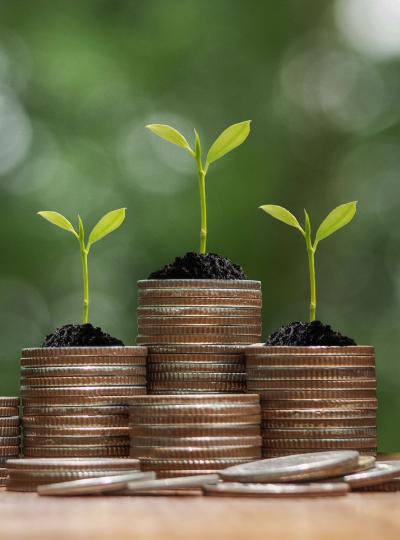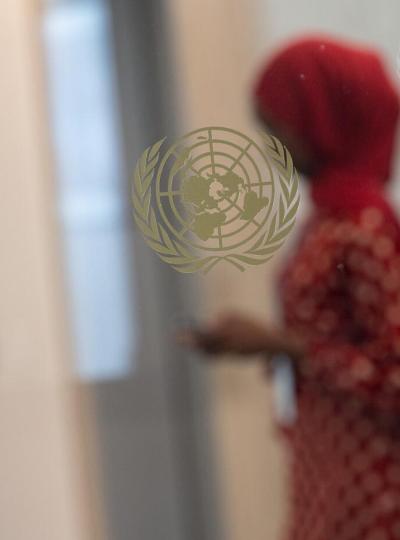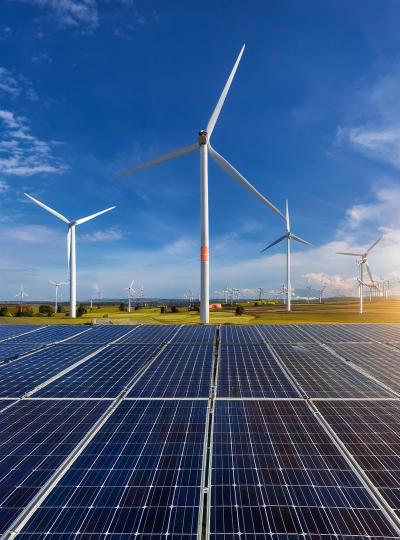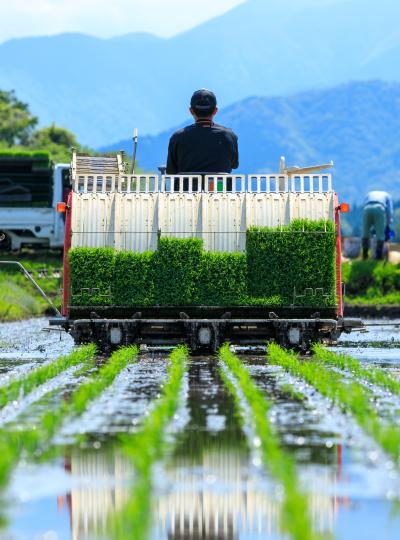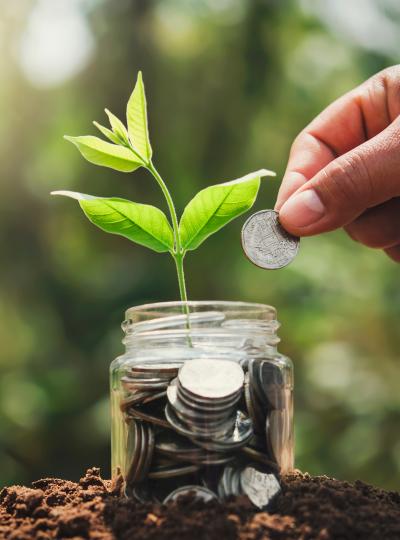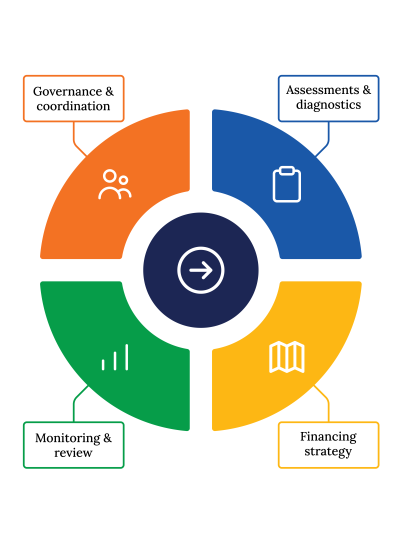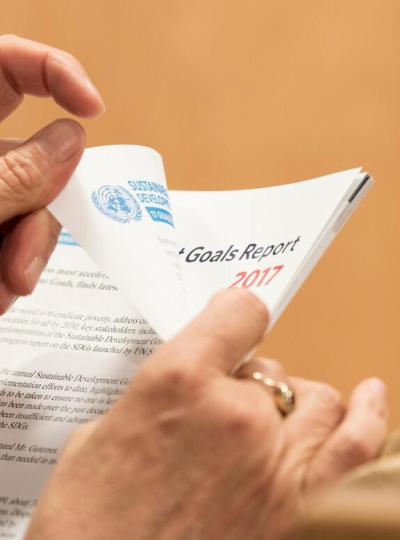Biofertilizer Production
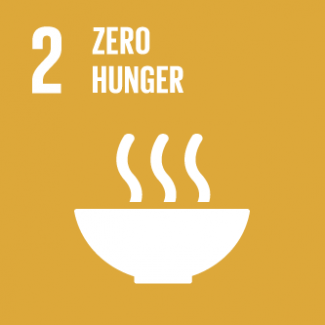
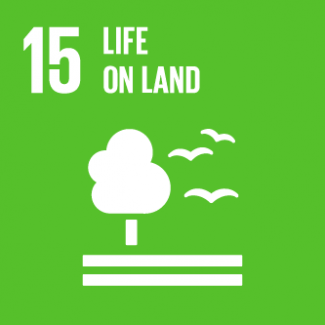
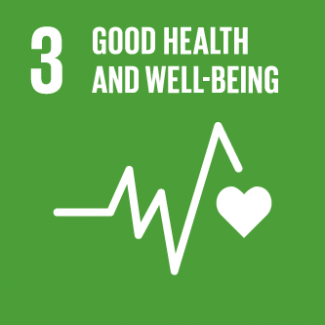
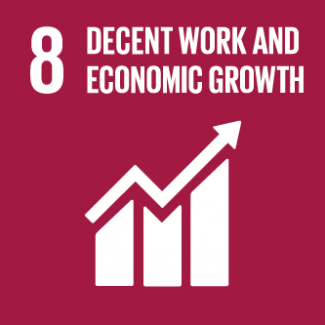
Business Model Description
Source biowaste from cocoa, cotton, cashew, coffee, seaweed, and other agricultural products to create biofertilizers, which are then sold to farmers and cooperatives. Agricultural companies and cooperatives can also produce biofertilizers by recycling their own biowaste, reducing input costs.
Expected Impact
Help boost agricultural productivity, improve farmers' health, lead to soil restoration and limit biodiversity loss from agriculture.
How is this information gathered?
Investment opportunities with potential to contribute to sustainable development are based on country-level SDG Investor Maps.
Disclaimer
UNDP, the Private Finance for the SDGs, and their affiliates (collectively “UNDP”) do not seek or solicit investment for programmes, projects, or opportunities described on this site (collectively “Programmes”) or any other Programmes, and nothing on this page should constitute a solicitation for investment. The actors listed on this site are not partners of UNDP, and their inclusion should not be construed as an endorsement or recommendation by UNDP for any relationship or investment.
The descriptions on this page are provided for informational purposes only. Only companies and enterprises that appear under the case study tab have been validated and vetted through UNDP programmes such as the Growth Stage Impact Ventures (GSIV), Business Call to Action (BCtA), or through other UN agencies. Even then, under no circumstances should their appearance on this website be construed as an endorsement for any relationship or investment. UNDP assumes no liability for investment losses directly or indirectly resulting from recommendations made, implied, or inferred by its research. Likewise, UNDP assumes no claim to investment gains directly or indirectly resulting from trading profits, investment management, or advisory fees obtained by following investment recommendations made, implied, or inferred by its research.
Investment involves risk, and all investments should be made with the supervision of a professional investment manager or advisor. The materials on the website are not an offer to sell or a solicitation of an offer to buy any investment, security, or commodity, nor shall any security be offered or sold to any person, in any jurisdiction in which such offer would be unlawful under the securities laws of such jurisdiction.
Country & Regions
- Côte d'Ivoire: Lacs
- Côte d'Ivoire: Vallée du Bandama
- Côte d'Ivoire: Sassandra-Marahoué
- Côte d'Ivoire: Bas-Sassandra
- Côte d'Ivoire: Lagunes
Sector Classification
Food and Beverage
Development need
Agriculture and deforestation driven by agricultural expansion are the primary contributors to greenhouse gas emissions in Côte d'Ivoire. From 2010 to 2022, the intensive cultivation of cash crops (cocoa, rubber, palm oil, and coffee) on forested lands led to the degradation of 11% of the land, resulting in significant productivity losses (1, 11).
Policy priority
The National Agricultural Investment Program II seeks to elevate agriculture as Côte d'Ivoire's economic powerhouse, as Côte d'Ivoire remains dependent on imports to meet its nutritional needs. It targets 7.8% annual growth in agricultural production, supported by new agricultural clusters. In addition, the Pacte pour l'Alimentation et l'Agriculture aims to achieve national self-sufficiency in rice and fish by 2025, improve mechanization, reach 70% of private investment in the agricultural sector, and transform locally half of the crops (4, 8, 16).
Gender inequalities and marginalization issues
Agricultural production, including market gardening, cocoa, and rice, remains male-dominated, with access to land and credit for women remaining difficult. Women are underrepresented among farm owners, representing 10% of the total but accounting for almost 80% of food production. They are often employed as unpaid labor (2, 3, 5).
Investment opportunities introduction
Accounting for 28% of Côte d'Ivoire's GDP, the agricultural sector is one of the driving forces behind the economy. Côte d'Ivoire is the world's largest producer of cocoa and cashew nuts, 5th producer of palm oil, 7th producer of natural rubber and 4th producer of cotton. In addition, agriculture has forward linkages with the manufacture sector by providing inputs, including the agro-industry (e.g. chocolate) and textiles (cotton), thereby playing a key role for structural transformation (7).
Key bottlenecks introduction
Climatic hazards can have a major impact on food prices, as can logistical difficulties. The 2022/2023 season was affected by a rise in fertilizer prices due to the war in Ukraine. The amplitude of variations is set to increase with global warming (9, 17).
Food and Agriculture
Development need
Climate change poses risks to labor productivity and forest cover, threatening agricultural sustainability, notably cocoa, which contributes 40% to export earnings. Additionally, the degree of transformation is low - over half of cocoa beans are exported unprocessed, while the country depends on imports of fish and rice to cover its consumption (1, 10, 13).
Policy priority
The government aims to increase local processing of key crops (100% of cocoa beans by 2030, 2 MT of rice per year). It supports sustainable production under the National Agricultural Investment Plan II (2017-2025), promoting climate-smart agriculture. In its NDCs, it targets a 30.4% reduction in greenhouse gas emissions between 2021 and 2030 compared to a reference scenario (12, 14, 15).
Gender inequalities and marginalization issues
There are significant spatial inequalities in Côte d'Ivoire, with agricultural districts such as Montagnes having extreme poverty rates largely superior compared to urban areas, such as San Pedro and Abidjan (17).
Investment opportunities introduction
Côte d'Ivoire is the world's leading cocoa and cashew producer, with 2.4 million tons of cocoa to be produced by 2022. However, climate change is likely to cause major disruptions, cocoa production is expected to drop by 30% in the early 2023/2024 season. Further investments in staple food production are needed to reach self-sufficiency (6).
Key bottlenecks introduction
Agriculture requires increasing investment as soils are degraded in many regions, undermining productivity and posing a major environmental problem. In addition, the country's taxation system applicable to agriculture is complex and can inhibit the entry of new players (1).
Agricultural Products
Pipeline Opportunity
Biofertilizer Production
Source biowaste from cocoa, cotton, cashew, coffee, seaweed, and other agricultural products to create biofertilizers, which are then sold to farmers and cooperatives. Agricultural companies and cooperatives can also produce biofertilizers by recycling their own biowaste, reducing input costs.
Business Case
Market Size and Environment
613,000 metric tons in 2021
Côte d'Ivoire's imported more than 613,000 MT of fertilizers in 2021 while the five-year import average was above 472,000 MT. There is no production of inorganic fertilizers in the country. The production of local fertilizers is limited to organic fertilizers and covers only around 1% of the imports (56).
Indicative Return
20% - 25%
A biofertilizer processing investment in Benin, operating in the Economic Community of West African States region (ECOWAS), including Cote d’Ivoire, indicates a Return on Investment of 25%, with four years to pay back investment (37, 55).
Investment Timeframe
Short Term (0–5 years)
A biofertilizer processing investment in Benin, operating in the Economic Community of West African States region (ECOWAS), including Cote d’Ivoire, scaled up investment four years after it became operational (55).
Ticket Size
< USD 500,000
Market Risks & Scale Obstacles
Business - Supply Chain Constraints
Market - High Level of Competition
Impact Case
Sustainable Development Need
Côte d'Ivoire produces only 0.1% of West Africa's fertilizers' total output, importing almost all its consumption. This exposes the country to supply shocks - endangering its agricultural production capacity, and leads to higher expenses (19).
The production of cocoa, vegetables, and cotton, all crucial to Côte d'Ivoire, relies heavily on pesticides and fertilizers. This intensive use has adverse effects on farmers' health, causing respiratory issues, skin disorders, and chronic conditions (22).
Soil degradation linked to the use of chemical leads to lower yields over the long-term, constituting a threat to food security and poverty eradication (22).
Côte d'Ivoire consumes an average of 50 kilograms of fertilizer per hectare against an average of 100 to 200 kilograms in western and Asian countries. This leads to lower food production, negatively impacting food security and export capacity (49).
Gender & Marginalisation
Women form 68% of the labor force in the cocoa production, and are responsible for 80% of the food production. They are critically exposed to chemical-related contamination (24, 25).
Expected Development Outcome
Biofertilizers can be produced locally, hence reducing the trade deficit while also being more affordable for farmers compared to conventional products (54).
Biofertilizers pose fewer health risks to farmers, especially those working closely with agricultural inputs on a daily basis over extended periods (57).
Biofertilizers offer a safer alternative to synthetic fertilizers, causing less soil deterioration by promoting nutrient availability and microbial activity. They reduce erosion, support long-term soil fertility, and maintain or even enhance crop yields (50).
Producing biofertilizers contributes to increasing the quantities of fertilizer used per hectare, contributing to higher yields, a reduction in food imports, and the fight against food insecurity (50).
Gender & Marginalisation
Increased supply of biofertilizers would diminish exposure to toxic chemicals, especially for women farmers, with expected positive outcomes including fewer cancer and intoxication cases.
Primary SDGs addressed

2.4.1 Proportion of agricultural area under productive and sustainable agriculture
Only 15% of farmers use fertilizers, relying primarily on conventional products (58).
N/A

15.3.1 Proportion of land that is degraded over total land area
11.84% of the total land area was degraded in 2019 (59).
Côte d'Ivoire has made commitments to the African Forest Landscape Restoration Initiative to restore 5 million hectares of deforested landscapes by 2030 (14).

3.4.1 Mortality rate attributed to cardiovascular disease, cancer, diabetes or chronic respiratory disease
The probability of dying from any of CVD, cancer, diabetes, CRD between age 30 and exact age 70 was 22% in 2019 (40).
At the global level, the objective is to reduce by one third by 2030 the rate of premature mortality due to non-communicable diseases and promote mental health and well-being (24).
Secondary SDGs addressed

Directly impacted stakeholders
People
Gender inequality and/or marginalization
Planet
Corporates
Public sector
Indirectly impacted stakeholders
People
Planet
Corporates
Outcome Risks
If biowaste is not stored properly, nor production of biofertilizers adequately supervised, biofertilizers can be contaminated with harmful pathogens such as heavy metals or other pollutants, leading to negative health outcomes for farmers and consumers. This is especially true if the source materials (e.g., fish waste or seaweed) are not properly treated (60).
While biofertilizers are generally more sustainable than chemical fertilizers, improper production processes or overuse could still lead to environmental harm, such as nutrient run-off into water bodies, leading to eutrophication (61).
If biofertilizer production disrupts the existing market for traditional fertilizers, retailers and farmers who rely on established suppliers and practices may face challenges adapting.
Gender inequality and/or marginalization risk: Women and marginalized individuals involved in the manual aspects of biofertilizer production might face exposure to biohazards.
Impact Risks
If the cost of chemical fertilizers falls, farmers may be less inclined to adopt biofertilizers. The social and environmental benefits of biofertilizers would therefore be impacted.
If the production of biofertilizers is insufficiently controlled, traditional fertilizers could be labelled as ‘organic’, which would constitute unfair competition and would complicate the identification of truly organic fertilizers.
Unregulated biofertilizer production and output quality could lead to inconsistent nutrient profiles, leading to either under-supply or oversupply of nutrients like nitrogen or phosphorus, thereby impacting agricultural production (62).
Gender inequality and/or marginalization risk: If biofertilizer production is commercialized or controlled by larger agricultural enterprises, small-scale women farmers and marginalized groups might struggle to access these products due to high costs or distribution limitations.
Impact Classification
What
The production of biofertilizers would encourage more sustainable and less toxic production and generate additional income for agricultural producers through the sale of bio-waste.
Who
Farmers producing cotton, fruits, vegetables, cocoa, and coffee would benefit from better health outcomes.
Risk
Falling chemical fertilizer costs and unregulated biofertilizer production could reduce adoption, create unfair competition, and lead to inconsistent nutrient supply, impacting agricultural productivity and the environment.
Contribution
Contribution: The production of biofertilizers from biomass complements other uses of biowaste. It adds to these alternatives by allowing to valorise types of biowaste which are otherwise not used, such as fish waste, while contributing to food security.
How Much
The Ivorian government, with support from the African Development Bank, aims to help at least 180,000 smallholder farmers access fertilizers to enhance their crop yields, through the African Fertilizer Financing Mechanism programs (63).
Impact Thesis
Help boost agricultural productivity, improve farmers' health, lead to soil restoration and limit biodiversity loss from agriculture.
Enabling Environment
Policy Environment
The National Strategy for the Conservation and Sustainable Use of Biological Diversity in Côte d'Ivoire advocates for the scaling up of biofertilizer production as a sustainable agricultural practice aligned with environmental and food security goals (32).
The National Biodiversity Strategy and Action Plan 2016–2020 (Stratégie et plan d'action pour la diversité biologique nationale 2016-2020) designates chemical fertilizers as responsible for environmental disruptions and presents a roadmap for expanded biofertilizer adoption (34).
The National Agricultural Investment Program II (Programme National d'Investissement Agricole II or PNIA II) seeks to elevate agriculture as a key economic driver in Côte d'Ivoire with 9% of its GDP, targeting an overall growth in the primary sector of 9% a year. It promotes sustainable agriculture, and lists the development of organic fertilizers among its priorities, along with the expansion of agroforestry and stringer controls on conventional fertilizers (8).
The National Climate-Smart Agriculture Strategy for Côte d'Ivoire addresses broad food security issues in Côte d'Ivoire, including access to nutritious food, resilience to shocks, and sustainable agricultural production. It stresses the importance of biofertilizers for the development of climate-smart agriculture (41).
Financial Environment
Fiscal incentives: Under the Investment Code (2018), agriculture and agro-industrial firms, including biofertilizer producing plants, can benefit from incentives such as Corporate Income Tax exemptions, real estate tax exemptions, and employer contribution exemptions, depending on the zone in which they operate. In rural areas, exemptions can reach 100% over 10 years, following a 75% exemption over five years, on corporate income tax, property tax, employer contributions, etc. (46).
Other incentives: Various technical training on biofertilizer production and use are offered by public and private entities as well as NGOs (Conseil Café-Cacao, Yara, Sens Solidaire). These facilitate the adoption of biofertilizers (47, 20).
Other incentives: Competitions and funding programs from organizations such as the World Bank, the Louis Dreyfus Foundation, and other entities present valuable financing opportunities for SMEs. In 2019, the Louis Dreyfus contest offered 24 million CFA Francs in 2019 (USD 38,473) to the four winning entrepreneurs. The World Bank's Agriculture Sector Support Project also includes providing farmers with subsidized fertilizers, which can benefit biofertilizer producers (34, 35, 64).
Regulatory Environment
Loi d’Orientation Agricole (2015): lays out several measures promoting sustainable agriculture and biofertilizers, including the creation of local production units for organic and mineral fertilizers. It also offers incentives for "green investments," which include biofertilizers as part of sustainable agricultural inputs (33).
Regulation C/REG.13/12/12 of the Economic Community of West African States (ECOWAS) on the Quality Control of Fertilizers states that fertilizers can be sold or used in Côte d'Ivoire if they comply with an ISO standard, are covered by an Approval or a Temporary Import Authorization, or consist of raw organic products (42).
Marketplace Participants
Private Sector
MBFi, Rizobacter, Novozymes, Elephant Vert, Confédération Générale des Entreprises de Côte d’Ivoire (CGECI), Lono, Icon, Green Countries, Biofertil.
Government
Ministère de l'Agriculture et du Développement Rural, Ministère Environnement, Développement Durable et Transition Ecologique, Centre de Promotion des Investissements en Côte d’Ivoire (CEPICI).
Multilaterals
Economic Community of West African States (ECOWAS), West African Economic and Monetary Union (WAEMU), International Fertilizer Development Center (IFDC), Innovation Fund for Development, European Institute for Cooperation and Development, Food and Agriculture Organization (FAO).
Non-Profit
West African Fertilizer Association, Farm Foundation, United States Agency for International Development (USAID).
Target Locations
Côte d'Ivoire: Lacs
Côte d'Ivoire: Vallée du Bandama
Côte d'Ivoire: Sassandra-Marahoué
Côte d'Ivoire: Bas-Sassandra
Côte d'Ivoire: Lagunes
References
- (1) Groupe de la Banque Mondiale. 2023. Rapport national sur le climat et le développement. https://openknowledge.worldbank.org/bitstreams/394b9ab5-878b-42bd-bd19-374d05aac64e/download
- (2) Beyond Beans. 2023. Raising the Bar: Cocoa and Gender Equality in Côte d'Ivoire. https://beyondbeans.org/2023/03/08/raising-the-bar-cocoa-and-gender-equality-in-cote-divoire/
- (3) Confectionery News. 2018. Gender equality in the cocoa trade: two female farmers from Côte d'Ivoire readdress the balance. https://www.confectionerynews.com/Article/2018/10/16/Gender-equality-in-the-cocoa-trade-two-female-farmers-from-Cote-d-Ivoire-readdress-the-balance
- (4) CIRAD. 2018. Étude d’identitification et d’analyse des contraintes à la production maraîchère selon les grandes zones agro-climatiques de la Côte d’Ivoire. https://agritrop.cirad.fr/591600/1/Rapport%20complet%20Maraichage%20RCI%20CIRAD%20FIRCA%20VF%20%202019.pdf
- (5) FIRCA. 2022. Genrer, pour une répartition équitable des revenus agricoles. https://firca.ci/blog/repartition-equitable-des-revenus-agricoles-en-matiere-de-genre/
- (6) Africa News. 2023. Côte d'Ivoire : la saison du cacao 2023/2024 menacée par les intempéries. https://fr.africanews.com/2023/10/04/cote-divoire-la-saison-du-cacao-20232024-menacee-par-les-intemperies/
- (7) Ministry of Agriculture. 2019. Côte d'Ivoire : contexte agricole et relations internationales. https://agriculture.gouv.fr/cote-divoire-contexte-agricole-et-relations-internationales
- (8) Ministère de l'Agriculture et du développement rural. 2017. Programme National d'Investissement Agricole II - 2018-2025. https://www.gafspfund.org/sites/default/files/inline-files/7a.%20Ivory%20Coast_Investment%20Plan.pdf
- (9) Oxford Business Group. 2020. How Côte d'Ivoire is making cocoa sustainable. https://oxfordbusinessgroup.com/reports/cote-divoire/2020-report/economy/sustainable-cocoa-public-and-private-sector-initiatives-are-engineering-a-favourable-environmental-and-economic-outlook
- (10) Le Monde. 2023. En Côte d'Ivoire, la filière cacao passe à la vitesse supérieure. https://www.lemonde.fr/afrique/article/2023/02/15/en-cote-d-ivoire-la-filiere-cacao-passe-a-la-vitesse-superieure_6161978_3212.html
- (11) Alter Eco. 2024. Nos producteurs partenaires. https://www.altereco.com/produit/chocolat-noir-81-cote-divoire
- (12) Gouvernement de la Côte d'Ivoire. 2021. Plan National de Développement PND 2021-2025. https://dcf.ci/dcf.ci/wp-content/uploads/2021/09/PND-2021-2025_Tome-1_Diagnostic-strate%CC%81gique.pdf
- (13) Le Monde. 2024. La Côte d’Ivoire suspend l’exportation de produits vivriers au nom de « la sécurité alimentaire ». https://www.lemonde.fr/afrique/article/2024/01/23/la-cote-d-ivoire-suspend-l-exportation-de-produits-vivriers-au-nom-de-la-securite-alimentaire_6212541_3212.html
- (14) Gouvernement de Côte d'Ivoire. 2022. Deuxième Rapport National Volontaire de la Côte d'Ivoire. https://hlpf.un.org/sites/default/files/vnrs/2022/VNR%202022%20Cote%20dIvoire%20Report_0.pdf
- (15) Gouverement de Côte d'Ivoire. 2018. Transformation de riz paddy: Bientôt 30 unités industrielles mises en service en Côte d'Ivoire. https://www.gouv.ci/_actualite-article.php?recordID=8927
- (16) African Union. 2023. Pacte pour l'Alimentation et l'Agriculture. 2023. https://www.afdb.org/fr/documents/cote-divoire-pacte-pour-lalimentation-et-lagriculture
- (17) Ministère de l'Economie, du Plan et du Développement. 2023. Plan National de Développement 2021-2025. Rapport Annuel 2023.
- (18) AGRA. 2023. Ghana Fertilizer Bulk Blending Guide. https://agra.org/wp-content/uploads/2023/11/AGRA-Ghana-Fertilizer-Bulk-Blending-Guide.pdf
- (19) IFDC. 2022. Guide d'information sur le commerce des engrais en Afrique de l'Ouest. https://ifdc.org/wp-content/uploads/2022/04/FINAL_WAFBIG2022FR_web.pdf
- (20) Water and Energy for Food. 2023. Formation en Côte d’Ivoire : Renforcer les compétences des producteurs agricoles sur le compostage. https://we4f.org/program-news/formation-en-cote-divoire-renforcer-les-competences-des-producteurs-agricoles-sur-le-compostage
- (21) Jeune Afrique. 2017. Agriculture : Bio Phyto Collines, ou la réussite des engrais bio en Afrique. https://www.jeuneafrique.com/438684/economie-entreprises/agriculture-bio-phyto-collines-reussite-engrais-bio-afrique/
- (22) Farm. 2023. Comment améliorer la santé des sols en Afrique de l’Ouest ? https://fondation-farm.org/sante-sols-afrique-cote-ivoire/
- (23) Chojnacka, K. et al. 2020. Bio-based fertilizers: A practical approach towards circular economy. https://www.sciencedirect.com/science/article/pii/S0960852419314531
- (24) Cocoa Initiative. 2018. Reconnaitre aujourd’hui et chaque jour le travail des femmes dans la production du cacao. https://www.cocoainitiative.org/fr/news/reconnaitre-aujourdhui-et-chaque-jour-le-travail-des-femmes-dans-la-production-du-cacao
- (25) Gouvernment du Canada. 2024. Faire germer l’égalité des genres grâce à l’agriculture en Côte d’Ivoire. https://www.international.gc.ca/world-monde/stories-histoires/2018/sowing-seeds-cote-divoire.aspx?lang=fra
- (26) Yara. 2024. Les cultures maraicheres - Côte d'Ivoire. https://www.yara.ci/fertilisation/fertilisation/aide-et-conseils/article-de--base/#:~:text=Les%20principaux%20produits%20maraichers%20cultiv%C3%A9es,sont%20des%20produits%20d%27autoconsommation.
- (27) All Africa. 2023. Cote d'Ivoire: District autonome Sassandra / Marahoué - Cinq marchés de proximité en construction. https://fr.allafrica.com/stories/202304260253.html
- (28) Elephant Vert. 2024. Filiale Côte d'Ivoire - Eléphant Vert. https://www.elephant-vert.com/nous-trouver/filiale-cote-divoire/
- (29) Afrik. 2021. A Worofla, 110 jeunes sont formés à la production de biofertilisants. https://www.afrik21.africa/cote-divoire-a-worofla-110-jeunes-sont-formes-a-la-production-de-biofertilisants/
- (30) AA. 2022. Le groupe turc, Icon, spécialisée en engrais biologique s’implante en Côte d’Ivoire. https://www.aa.com.tr/fr/afrique/le-groupe-turc-icon-sp%C3%A9cialis%C3%A9e-en-engrais-biologique-s-implante-en-c%C3%B4te-d-ivoire/2482549
- (31) GiZ. 2020. Partnership Ready Côte d’Ivoire: Gestion et recyclage des déchets organiques. https://www.giz.de/en/downloads/GBN_Sector%20Brief_CIV_Bioabfall_FR_Web.pdf
- (32) Ministère de l'Environnement et du Cadre de Vie. Stratégie nationale de conservation et d'utilisation durable de la diversité biologique de la Côte d'Ivoire https://www.cbd.int/doc/world/ci/ci-nbsap-01-fr.pdf
- (33) République de Côte d'Ivoire. 2015. Loi n° 2015-537 du 20 juillet 2015 d'orientation agricole. https://www.chambragri.ci/sites/default/files/pdf/LOI-DORIENTATION-AGRICOLE.pdf
- (34) Ministère de l’Environnement, de la Salubrité Urbaine. 2016. STRATEGIE ET PLAN D’ACTION POUR LA DIVERSITE BIOLOGIQUE NATIONALE 2016-2020. https://faolex.fao.org/docs/pdf/IVC161732.pdf
- (35) IECD. 2019. 4 entrepreneurs lauréats du concours Louis Dreyfus. https://www.iecd.org/un-appui-de-24-millions-de-francs-cfa-pour-soutenir-les-entrepreneurs-de-cote-divoire/#:~:text=ABIDJAN%2C%20C%C3%B4te%20d%27Ivoire%2C,destin%C3%A9e%20%C3%A0%20d%C3%A9velopper%20leur%20entreprise.
- (36) World Bank. 2021. Côte d’Ivoire : Un engagement plus fort au profit du développement des chaînes de valeur des cultures vivrières. https://www.banquemondiale.org/fr/news/press-release/2021/06/07/cote-d-ivoire-increased-commitment-to-the-development-of-the-agri-food-sector
- (37) Ruforum. 2016. Top 15 African Young Entrepreneurs. https://www.ranlab.org/wp-content/uploads/2016/11/Young-Innovators.pdf
- (38) Le Monde. 2023. Le palmier à huile, future source d'électricité en Côte d'Ivoire. https://www.lemonde.fr/afrique/article/2023/06/14/le-palmier-a-huile-future-source-d-electricite-en-cote-d-ivoire_6177648_3212.html
- (39) Mordor Intelligence. 2023. Analyse de la taille et de la part du marché des engrais organiques en Afrique - Tendances et prévisions de croissance (2023 - 2028). https://www.mordorintelligence.com/fr/industry-reports/africa-biological-organic-fertilizers-market
- (40) WHO. 2024. Probability of premature mortality from NCDs. https://data.who.int/indicators/i/C540135/1F96863
- (41) FAO and the Ministry of Agriculture and Rural Development. 2019. Stratégie nationale pour l’agriculture intélligente face au climat (SNAIC) en Côte d’Ivoire. https://www.fao.org/3/ca4820fr/CA4820FR.pdf
- (42) République de Côte d'Ivoire. [Undated]. DOCUMENT AUTORISATION PREALABLE D'IMPORTATION (API) DES ENGRAIS. https://pwic.gouv.ci/wp-content/uploads/documents/GUIDE_INTERACTIF/DOCUMENTS/3115_ENGRAIS_IM_.pdf
- (43) FIRCA. 2019. GREEN COUNTRIES, Optimisation du système de valorisation de biodéchets pour la production d’engrais organique. https://firca.ci/fciad/green-countries-optimisation-du-systeme-de-valorisation-de-biodechets-pour-la-production-dengrais-organique/
- (44) Fusacq. 2018. ELEPHANT VERT s'offre BIOFERTIL en Côte d'Ivoire. https://www.fusacq.com/buzz/elephant-vert-s-offre-biofertil-en-cote-d-ivoire-a160189_fr_
- (45) Consultation. 2023. UNDP SDG Investor Map project team consultation with a private sector representative in December 2023.
- (46) Présidence de la République. 2018. Ordonnance No. 2018-646 du 1er août 2018 portant code des investissements. https://tourisme.gouv.ci/uploads/Ordonnance-2018-646-du-01-08-2018code-investissement.pdf.pdf
- (47) Sens Solidaire. [Undated]. Côte d’Ivoire – Formation d’agriculture bio. https://www.sensolidaire.org/cote-divoire-generateur-de-projet/
- (48) Vishwakarma, P. et al. 2024. Biofertilizers and Soil Amendments from Algae: Production and Agronomic Benefits. https://doi.org/10.1007/978-981-97-1662-3_14
- (49) Sika Finance. 2024. Investir en Côte d’Ivoire : La production d’engrais organiques. https://www.sikafinance.com/marches/investir-en-cote-divoire-la-production-dengrais-organiques_48599
- (50) Daniel AI, et al. 2022. The Future of Food Security and Food Safety. https://pmc.ncbi.nlm.nih.gov/articles/PMC9227430/
- (51) Blé, L. O. et al. 2022. Etat de pollution des eaux de la rivière Kan, après la crise militaro-politique de 2010 en Côte d’Ivoire. https://www.google.com/url?sa=t&rct=j&q=&esrc=s&source=web&cd=&ved=2ahUKEwiipcyLlbGJAxWm9rsIHcoDE0U4ChAWegQIFBAB&url=https%3A%2F%2Fwww.ajol.info%2Findex.php%2Fijbcs%2Farticle%2Fview%2F227942%2F215190&usg=AOvVaw3X3JclTXQ5uTouNFKFYLNN&opi=89978449
- (52) Agrbi, L. et al. 2010. Bilan des flux de matières particulaires et dissoutes du Sassandra à Gaoulou pont (Côte d’Ivoire). https://www.google.com/url?sa=t&rct=j&q=&esrc=s&source=web&cd=&ved=2ahUKEwiIqeXolbGJAxXdgP0HHXobPQEQFnoECBIQAQ&url=https%3A%2F%2Fwww.ajol.info%2Findex.php%2Fscinat%2Farticle%2Fdownload%2F59944%2F48218&usg=AOvVaw0HnPCWUTiBwtdlEWGo078R&opi=89978449
- (53) Abou, T. et al. 2015. NIVEAU DE CONTAMINATION PAR LES PESTICIDES DES EAUX DES LAGUNES AGHIEN ET POTOU (SUD-EST DE LA CÔTE D'IVOIRE). https://www.researchgate.net/publication/332061080_NIVEAU_DE_CONTAMINATION_PAR_LES_PESTICIDES_DES_EAUX_DES_LAGUNES_AGHIEN_ET_POTOU_SUD-EST_DE_LA_COTE_D'IVOIRE/link/5c9d224745851506d7318b42/download?_tp=eyJjb250ZXh0Ijp7ImZpcnN0UGFnZSI6InB1YmxpY2F0aW9uIiwicGFnZSI6InB1YmxpY2F0aW9uIn19
- (54) Le Monde. 2021. En Côte d’Ivoire, l’entrepreneur qui veut transformer les déchets agricoles en richesse. https://www.lemonde.fr/afrique/article/2021/10/05/en-cote-d-ivoire-l-entrepreneur-qui-veut-transformer-les-dechets-agricoles-en-richesse_6097264_3212.html
- (55) Enabel. 2023. Création d’un environnement favorable au développement des Chaînes de Valeur Ajoutée (CVA) ciblées et à l'innovation. https://open.enabel.be/en/BEN/2367/2210/u/au-bnin-kampani-en-partenariat-avec-enabel-renforce-le-niveau-d-quipements-de-bio-phyto.html
- (56) AfricaFertilizer. 2024. Country Graphs - Côte d'Ivoire: Production, Trade and Apparent Consumption. https://africafertilizer.org/#/en/cotedivoire?countryIso=CI
- (57) Jana, B. et al. 2024. Bio-fertilizer: An alternative to chemical fertilizer in agriculture. https://www.agronomyjournals.com/article/view/539/7-4-39#:~:text=Biofertilizers%20offer%20a%20sustainable%20and,beneficial%20microorganisms%20in%20the%20soil.
- (58) Le Monde. 2021. En Côte d’Ivoire, l’entrepreneur qui veut transformer les déchets agricoles en richesse. https://www.lemonde.fr/afrique/article/2021/10/05/en-cote-d-ivoire-l-entrepreneur-qui-veut-transformer-les-dechets-agricoles-en-richesse_6097264_3212.html
- (59) United Nations Convention to Combat Desertification. 2019. Côte d'Ivoire. https://data.unccd.int/country-overview?country=CIV&layer=TOTAL_POPULATION_EXPOSED_TO_LAND_DEGRADATION_REPORTING
- (60) Kumar, D. J. P. 2024. A comprehensive study on anaerobic digestion of organic solid waste: A review on configurations, operating parameters, techno-economic analysis and current trends. https://www.sciencedirect.com/science/article/pii/S2665906924000047
- (61) Faiqa, A. and M. I. Jilani. 2024. Environmental, Microbiological and Chemical Implications of Fertilizers use in soils: A review. https://www.iscientific.org/wp-content/uploads/2024/02/6-IJCBS-24-25-18-6.pdf
- (62) Raimi, A. et al. 2021. Biofertilizer production in Africa: Current status, factors impeding adoption and strategies for success. https://www.sciencedirect.com/science/article/pii/S2468227621000028
- (63) AfDB. 2024. Sowing Seeds of Success: African Development Bank credit scheme boosts an agro-dealer cocoa farm fertilizer supply tenfold in Côte d'Ivoire. https://www.afdb.org/en/success-stories/sowing-seeds-success-african-development-bank-credit-scheme-boosts-agro-dealer-cocoa-farm-fertilizer-supply-tenfold-cote-divoire-68185
- (64) World Bank. 2023. Cote d'Ivoire - Agriculture Sector Support Project. https://documents1.worldbank.org/curated/en/099306303292311596/pdf/SECBOS07377729088095ef0a5be24a0e30d.pdf

